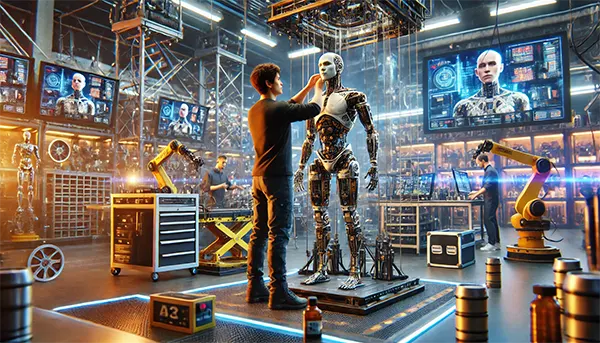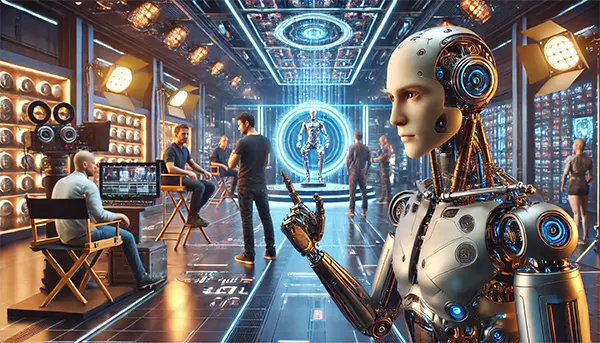
Robot Actors for Films: Future Technologies in Cinematography
Cinematography has always been at the forefront of technological innovation, captivating audiences with groundbreaking visuals and compelling narratives. As we move further into the 21st century, the integration of robotics into the film industry is transforming the way stories are told. Robot actors, once a figment of science fiction, are now becoming a reality, pushing the boundaries of creativity and production capabilities. This article explores the role of robot actors in modern filmmaking, examining their history, technical aspects, and potential impact on the industry’s future.
Introduction: Robots as a Part of the Film Industry
Modern cinematography is experiencing a technological revolution with the inclusion of robot actors. These machines, equipped with advanced artificial intelligence, have opened up new possibilities for storytelling and creativity. Directors and producers now have the tools to create characters that defy the limits of human capability. From lifelike gestures to flawless precision, robot actors bring a unique dimension to the art of filmmaking.
Their integration into the industry is not just a fleeting trend; it represents a significant shift in how films are conceived and produced. As audiences demand higher levels of realism and innovation, robots provide an ideal solution. Whether as protagonists or supporting roles, they contribute to creating memorable cinematic experiences that resonate with viewers worldwide. This evolution raises exciting questions about the future of storytelling and the boundaries of creativity.
The History and Development of Technology
The journey of robots in cinema began decades ago, with early attempts to incorporate mechanical characters in films. While these efforts were rudimentary, they laid the foundation for the sophisticated robots we see today. The rapid advancement of AI and robotics in the 21st century has accelerated this progress, allowing filmmakers to explore new artistic possibilities.
For instance, in the 1980s, animatronics and puppetry were commonly used to simulate robotic characters. However, these methods had limitations in movement and expression. The arrival of motion capture technology and advanced AI has changed the game. Today, robots like Sophia or creations from Boston Dynamics inspire filmmakers by demonstrating lifelike movements and adaptability. These breakthroughs have significantly influenced how robots are perceived and utilized in the film industry.
Technical Aspects of Robot Actors
The creation of robot actors involves a combination of cutting-edge technologies. Central to their functionality is artificial intelligence, which enables them to learn scripts, deliver lines, and react to their environment. AI algorithms process vast amounts of data, allowing the robots to simulate human-like behaviour and emotions. Additionally, motion capture systems enhance their physical movements, ensuring a seamless performance that integrates with live-action settings.
Another critical component is the use of advanced materials. These include synthetic skins that mimic human texture, flexible actuators for realistic motion, and robust frameworks that can endure the physical demands of filming. Furthermore, these robots are equipped with sensors that enable them to interact dynamically with actors and the environment. Such technological advancements ensure that robots do not merely mimic human actions but also respond intelligently to cues, creating a truly immersive experience.
Applications in the Film Industry
Robot actors have found applications in various film genres, from science fiction to drama and even comedy. In sci-fi films, they often play roles as androids or extraterrestrials, adding authenticity to futuristic narratives. Meanwhile, in action films, robots serve as reliable stunt doubles, performing dangerous sequences that might pose risks to human actors. These roles highlight their versatility and reliability.
Beyond stunt work, robots are increasingly being used as primary characters. For example, in dramas, they portray humanoid companions or antagonists, exploring complex emotional dynamics. Their ability to deliver consistent performances makes them invaluable assets during long shoots, where human fatigue might impact the quality of acting. This unique capability allows directors to experiment with scenes and achieve artistic precision that was previously unattainable.

The Impact on the Future of Cinema
The integration of robots into filmmaking has the potential to redefine the industry entirely. On a practical level, they can reduce production costs by automating repetitive tasks and enabling more efficient workflows. For independent filmmakers with limited budgets, robots can offer innovative ways to bring ambitious projects to life without relying on large teams or resources.
However, the rise of robot actors also introduces challenges, particularly in ethical and social contexts. The question arises: can robots replace human actors without compromising the essence of storytelling? While robots excel in precision and reliability, they lack the depth of human emotion and spontaneity that are central to impactful performances. As the industry embraces these advancements, it must also address concerns about job displacement and the balance between technology and artistry.
Ethical and Social Implications
Robots may revolutionise filmmaking, but their adoption raises ethical considerations. Many argue that the human touch in acting cannot be replicated by machines, no matter how advanced they become. This concern extends to the creative workforce, where actors, stunt professionals, and other contributors may feel threatened by automation. Balancing innovation with inclusivity will be critical as the industry navigates this transformation.
Moreover, the portrayal of robots in films influences public perception of AI and its role in society. By humanising robots on screen, filmmakers shape cultural narratives about their potential. This responsibility highlights the need for thoughtful storytelling that reflects both the opportunities and limitations of this technology. As we look to the future, the partnership between humans and robots in cinema promises to be an intriguing and dynamic evolution.
